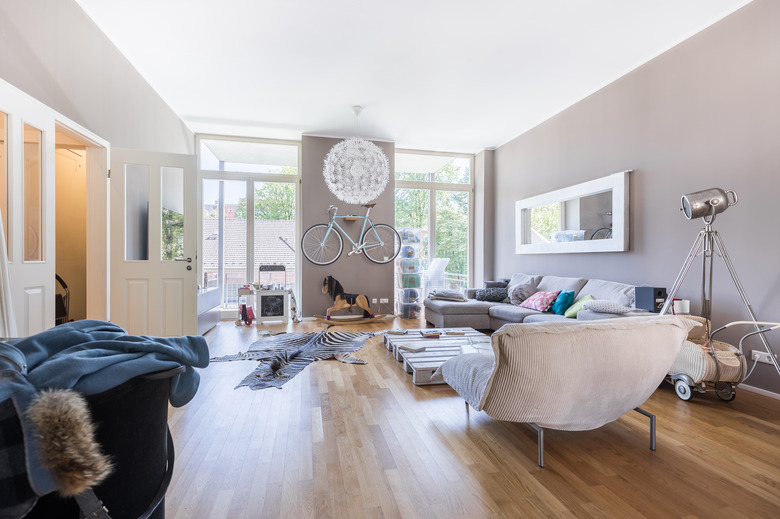What To Use To Fill Holes In Hardwood Floors
When you have a hardwood floor, occasional scratches, holes and dings are a fact of life, and you don't always have to fill them. Sometimes the best strategy may be to hide them with wood stain and clear finish, or just let them be and add to the character of the floor. When filling nail holes in prefinished hardwood floors becomes necessary, you have many options, ranging from latex and epoxy fillers to homemade ones made with glue and sawdust.
Latex Floor Filler
Latex Floor Filler
You can find latex floor filler in a range of colors at any store that sells flooring materials. It's the default choice of flooring professionals. You can use this type of filler for spot-filling nail holes and gaps as well as for filling an entire floor prior to sanding.
It's important to choose a color that matches the color of the stained and finished flooring, because latex filler doesn't accept stain itself. The main disadvantage of latex prefinished wood floor filler is that it shrinks and cracks over time, so it's not a good option for filling large cracks, gaps or knot holes.
Epoxy Prefinished Wood Floor Filler
Epoxy Prefinished Wood Floor Filler
Epoxy wood fillers, which usually come in two parts that must be mixed, are resistant to shrinking and cracking. They bond well to wood, making them the best option for repairing spreading cracks. Like latex filler, epoxy filler won't take a stain, so the color you choose must match the color of the finished wood.
One way around an inadequate selection of colors at your local hardware store is to use a clear product. Epoxy filler has a glossy sheen when it sets, and it's rare for the sheen to match that of the flooring. It's usually best to cover it with at least one coat of floor finish.
Lacquer Burn-In Sticks
Lacquer Burn-In Sticks
Furniture restorers erase scratches in furniture with lacquer burn-in sticks. These can be used on a floor to hide a cross-grain scratch that would remain visible if you filled it with wood filler.
The burn-in process uses a stick of solid lacquer and an iron. You melt the lacquer with the iron and trowel it into the scratch in a single motion. The main advantages of burn-in sticks are better sheen and color matching than you can get with filler, but lacquer isn't as durable and shouldn't be used for filling deep scratches or holes.
Make Your Own Filler
Make Your Own Filler
The most reliable way to match the color of a species of wood to fill holes in a wood floor is to mix sawdust from that wood species with glue or another type of binder. Don't use just any glue, though, or it may discolor the sawdust. Avoid PVA or carpenter's glue. No matter what type of sawdust you mix, the final color will be a dull yellow or even gray.
The best glue for this purpose is called wood flour cement, which is a type of epoxy adhesive. In a pinch, you could also use conventional clear epoxy or even clear lacquer or polyurethane. Mix the binder with sawdust to make a thick paste, and be sure to use it quickly before the binder sets.
